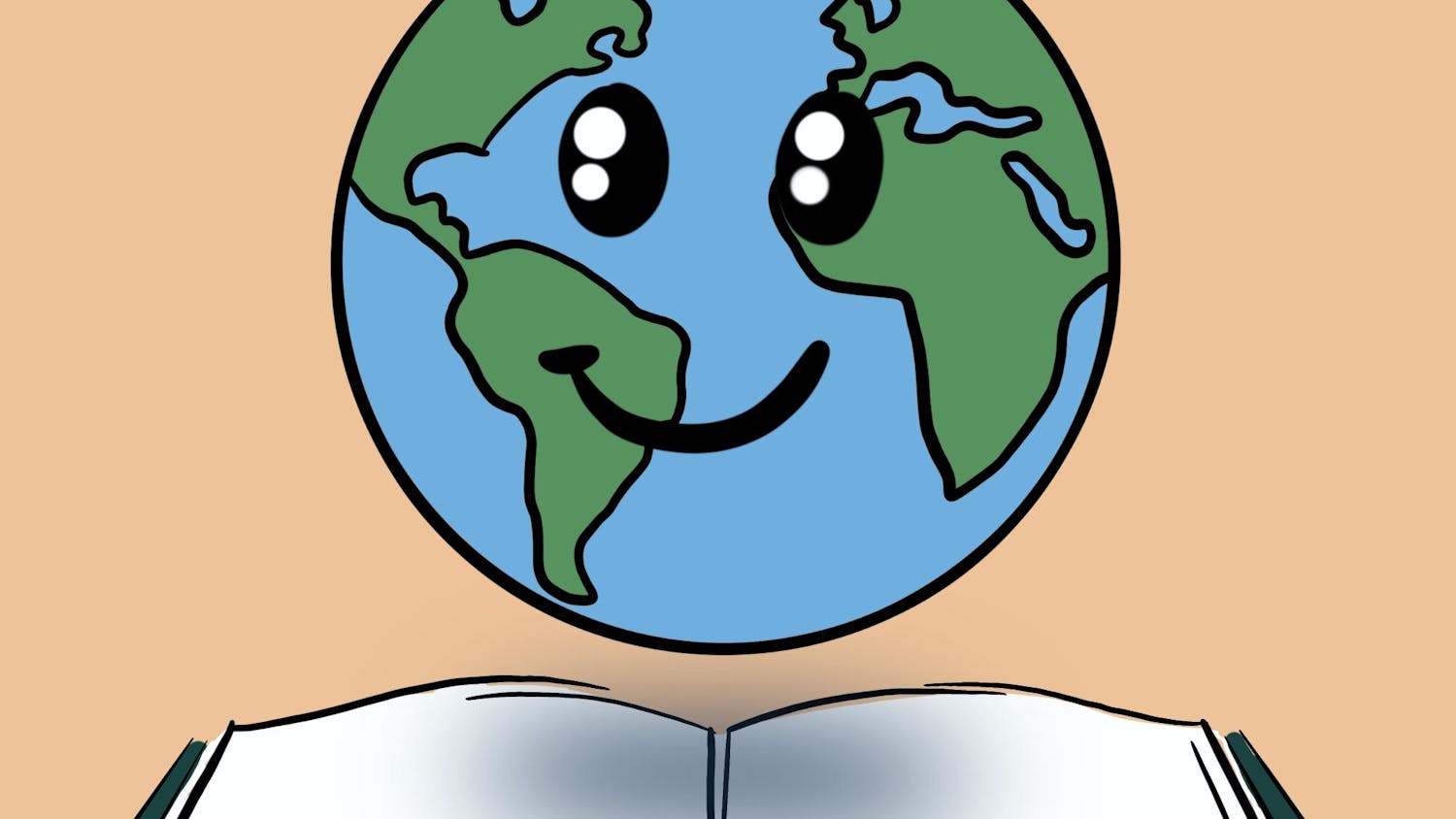The work of Edouard Duval-Carrié, artist-in-residence at the John Carter Brown Library, attempts to rebuild the lost narratives of history. A new book edited by Center for the Study of Slavery and Justice director Anthony Bogues, entitled “From the Revolution in the Tropics to Imagined Landscapes,” explores this and other dimensions of Duval-Carrié’s career. Bogues and Duval-Carrié gave a book talk and signing Monday evening in the center’s gallery.
Duval-Carrié sat down with The Herald to discuss the collaborations that gave rise to the book, the nexus between his work and Haitian history and an art project he conceived especially for Brown, “The Many Faces of Toussaint L’Ouverture.”
Herald: So you were born in Haiti, your family moved to Puerto Rico, you studied in Canada and France. How has your experience as a “global citizen” contributed to your aesthetic view?
Duval-Carrié: Somebody I know said that I’m the most cosmopolitan of Haitian artists. I always wanted to be inserted into the history of Haitian art, or follow it through, or take it from where it was and move it to somewhere else. And I think that my work is totally entrenched in Haitian history and culture. I’m pushing it to become more of a universal language, in the sense of the history of Haiti and the history of the new world. It’s not that specific of just Haiti — it’s all about slavery, it’s all about colonialism, it’s all about relationships between powerful countries and little nations. I’m very fascinated by the JCB here, where I was invited to consult on their vast collection of materials, not strictly on Haiti but the whole trans-Atlantic trade. All of this gets into my work.
Your work has always been pretty colorful and kaleidoscopic. I’m wondering, what role does color play in your work?
Well, it’s a trademark, and I’ve studied the ideas of Caribbean visions. After the Monroe Doctrine, the United States didn’t want all these islands to do business with Europe anymore. So people in the Caribbean were like, “How are we going to survive?” So the United States had to scramble to create new markets for whatever the products were in the Caribbean. They sent down a battery of artists to cover this, and they created an image to make it attractive to New York investors. In one sweep they created this idea of what the Caribbean should look like. I did a whole exhibit, called “Imaginary Landscapes,” revisiting these artists.
So since we are talking about “Imaginary Landscapes,” it’s your perception of what the Caribbean is?
It’s not just my perceptions. It’s what these artists have created centuries ago, and I think that they created a fabricated image. Because if you look at them carefully, it’s all beautiful, lush landscapes. They are practically non-existent, so I’ve added to the imagination by putting my artworks at night. I just pushed to the ultimate, because if you go to the Caribbean, it’s very urban, very dense. My artwork is like a commentary on what they created.
So this book, “From the Revolution in the Tropics to Imagined Landscapes,” is an overview of your art career. Did Bogues approach you for the book?
Originally, it was just a catalog for the Pérez Art Museum at Miami, which presented “Imagined Landscapes.” But he wanted to do something more, so he did a whole study of my career. I’m pleased and happy. I provided images, and there are extensive interviews with me.
Can you talk more about symbolism and connotations of your works in connection to the history of Haiti?
Well, Haiti is a very complex country. It’s all of Africa in a very small space, because when the French came to colonize, they went to Africa and they picked up slaves from everywhere. And then the revolution happened, and all these people who never knew each other converged. They created a new language and a new religion, a religion called voodoo. It was the first black republic. They try to copy and try adopting a modern democracy. I think it’s really important in the history.
What do you think of voodoo, and what’s the relationship between your artworks and voodoo?
I’d like to look at voodoo, because religion tells a lot about politics and what people think. I use it as a social commentary. I find it so fascinating that voodoo consists of so many religions, and it becomes more colorful the more I study it. Voodoo has about three hundred gods, a very crowded cosmogony. It’s always in flux. It plays a huge role in Haiti’s process of trying to become a modern democracy.
Your exhibition here, “Many Faces of Toussaint L’Ouverture” — that’s specifically created for the University?
I’m the first artist-in-residence at the JCB, which is really dedicated to the history of the New World. I’m delighted that I’m invited to create this little project. We talked about this idea of Toussiant L’Ouverture, who is a major figure who fights for freedoms for slaves in history. I’ve always been interested in him — he’s very controversial, he’s a monument. He’s a major figure that brought liberty for the whole African world. Even though he was the governor for Haiti and the first black general for the French army, there were no portraits of him. So we went through all the books that had imaginary images of him, and I played with that. It’s like building a hero.
This interview has been edited for clarity and length.
ADVERTISEMENT




